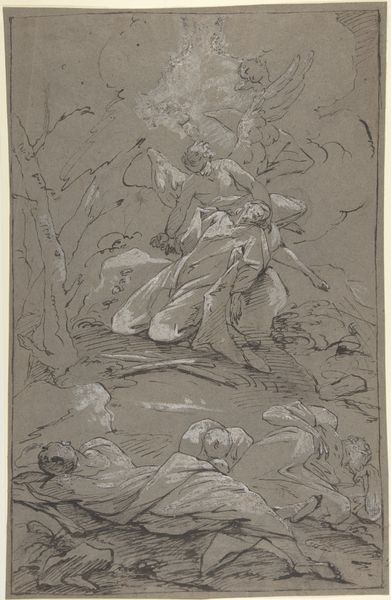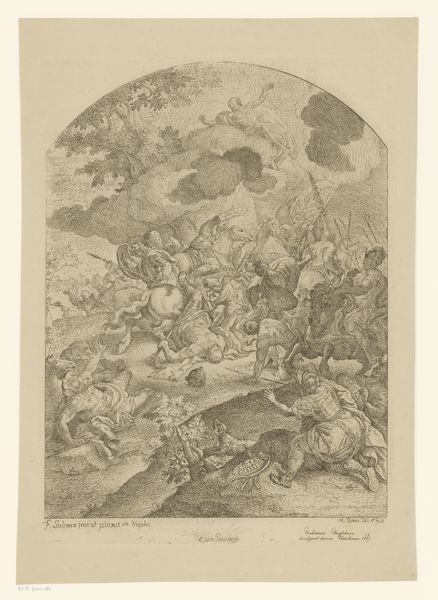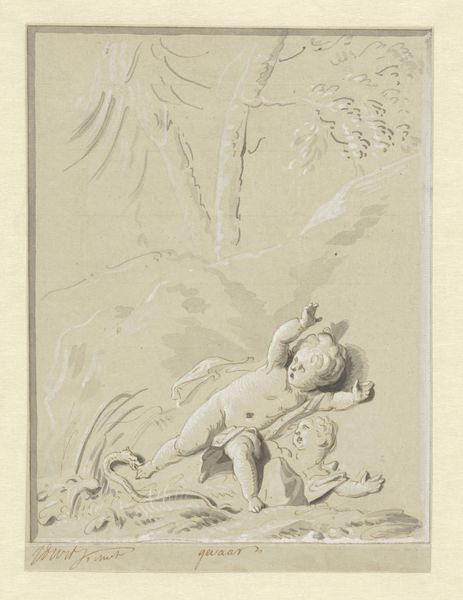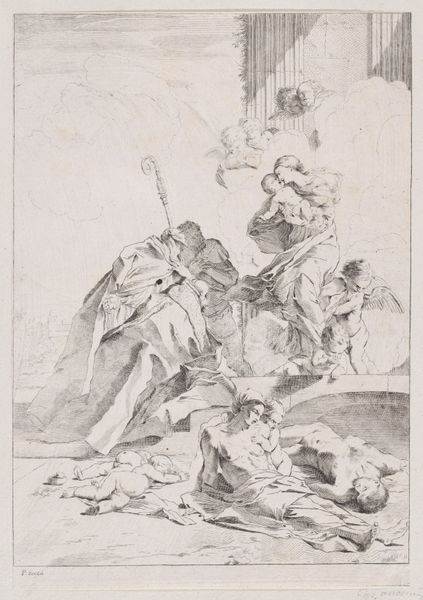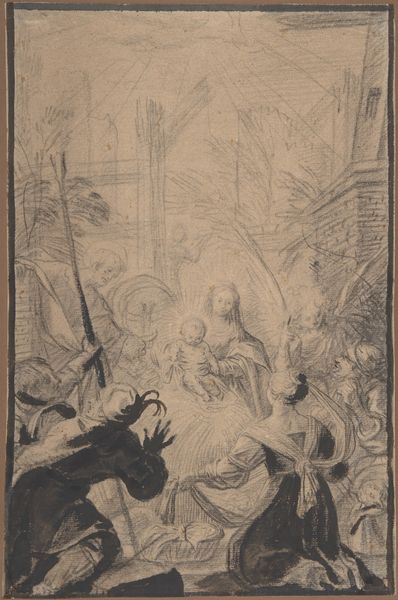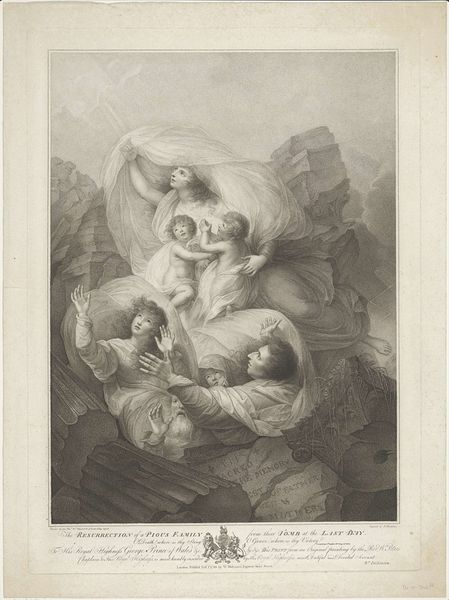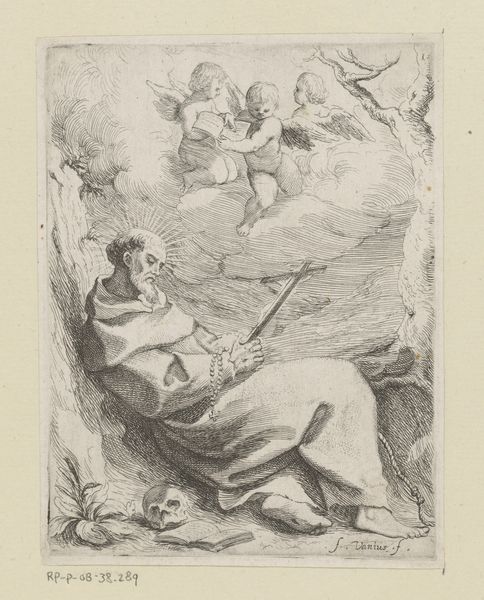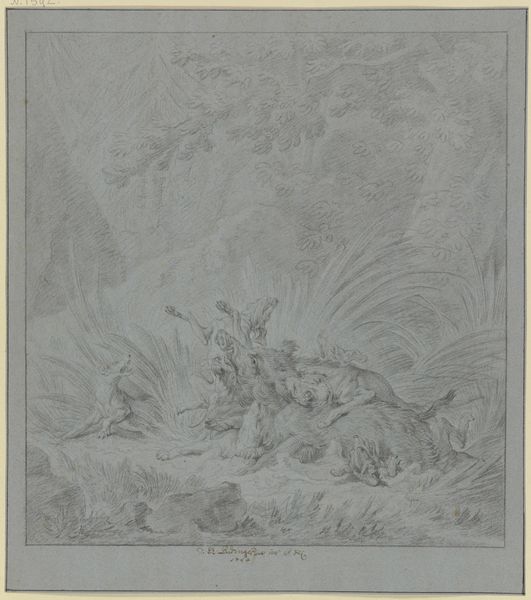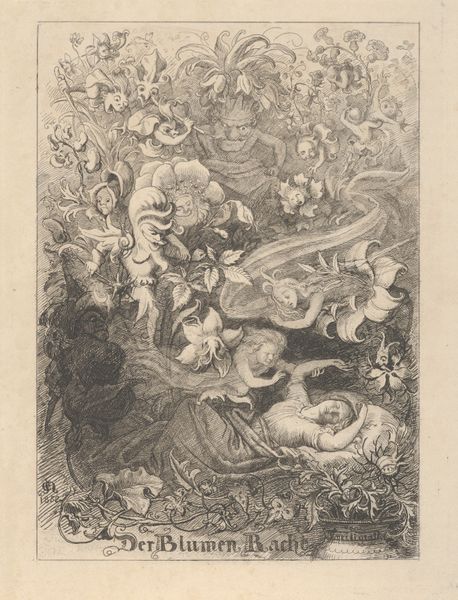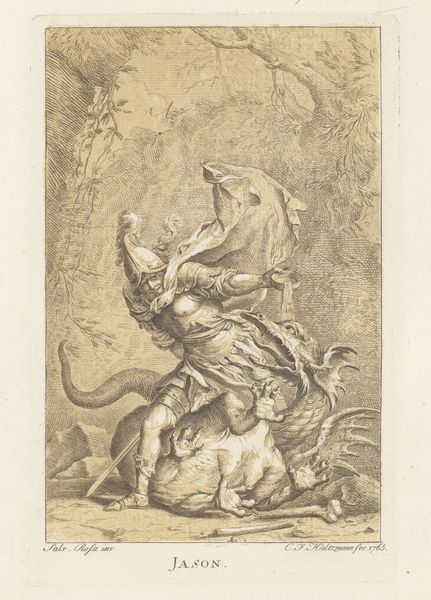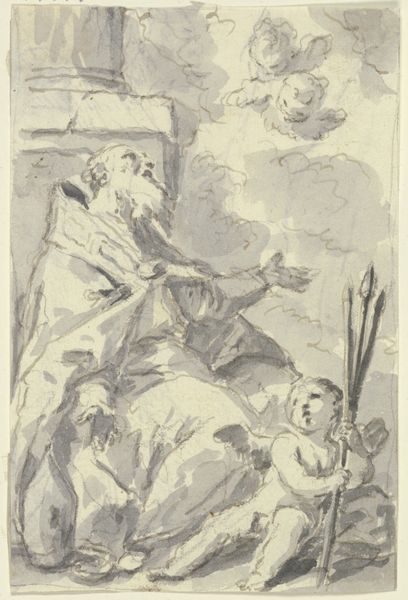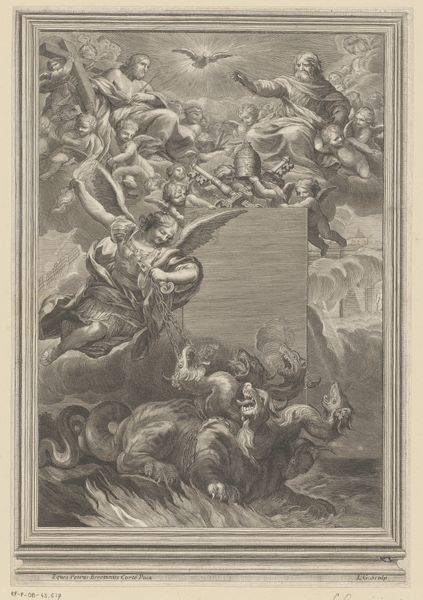
Ein Bär in einer Schlucht von einem Rudel Hunde gestellt 1746
0:00
0:00
drawing, gouache, paper, ink, chalk, charcoal
#
drawing
#
narrative-art
#
baroque
#
gouache
#
landscape
#
charcoal drawing
#
paper
#
ink
#
chalk
#
charcoal
Copyright: Public Domain
Editor: This drawing, "A Bear in a ravine, attacked by a pack of dogs" by Johann Elias Ridinger, made in 1746 using ink, chalk, charcoal, and gouache on paper, has a chaotic feel. The bear appears trapped, and the scene is quite violent. What stands out to you most when you look at this piece? Curator: The drama, certainly, but consider its context. Ridinger was an important figure in Baroque art, capturing these dynamic hunts, often for aristocratic patrons. Think about the implications: the display of power, dominance over nature, and even parallels to social hierarchies. What does this violent scene communicate about 18th-century perspectives on nature and power? Editor: So it’s not just about the hunt itself, but about what the hunt represents. I hadn’t considered the social hierarchy aspect so directly. Curator: Precisely! Consider the bear, cornered and fighting for its life. In what ways might this image also speak to broader themes of oppression and resistance beyond just the literal animal hunt? The violence is palpable. Does it romanticize it or, perhaps unintentionally, expose the brutality inherent in asserting power? Editor: It’s a difficult question. The skill in depicting the scene is undeniable, but now I can't unsee the discomfort, the imbalance of power portrayed so vividly. I’m left wondering whose perspective the artwork prioritizes, the hunters' or the hunted's? Curator: Exactly. That tension – that's where the power of this piece lies, sparking discomfort and demanding we look critically at the values it reflects. It gives us insight into societal structures, then and now. Editor: I came in seeing a hunting scene, but I’m leaving with questions about power, oppression, and whose stories get told through art. It’s a perspective shift I appreciate. Curator: Indeed. Analyzing art through a lens of social awareness unveils the layers of meaning woven within, and demands a deeper conversation.
Comments
No comments
Be the first to comment and join the conversation on the ultimate creative platform.
